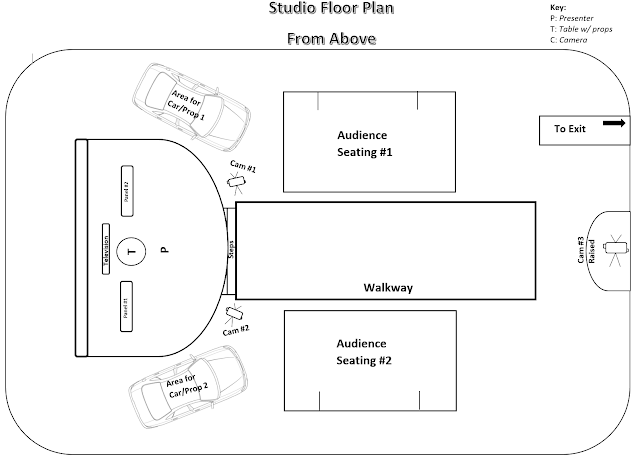
Today we did a lighting workshop where we ran through some basic information regarding professional grade lighting equipment, by doing this we hoped to begin to get an understanding of how lighting can be used to simulate depth within film. When shooting anything, one must be aware that we're filming 2D space, so with specific lighting, one can create the illusion of 3D depth. I thoroughly enjoyed this workshop as it gave me the opportunity to play around with professional lighting for the first time, and witness how light manipulated my image. This was also a good opportunity for our group to try and simulate lighting to be used in our projects.

We discussed in detail the aspects of a 3 point lighting setup, often used for interviews and other broadcast media. Rather than pictorialist lighting setups, leading to a more creative and specified look for your shot. The 3 point lighting setup includes a fill light directed towards the subject, a key light behind the subject and a 3rd light from a 45 degree angle which is often bounced off of a white/black surface in order to generate soft light. One of the most interesting parts of this workshop was what we learnt about the differences between naturalism and pictorialism.
 |
| Heath Ledger as 'The Joker' in 'The Dark Knight' (2008) |
This image (pictured right) is an example of naturalist lighting. As you can see the only light illuminating the subject is that from the window. By doing this it creates a much more 'realistic' look for the shot and can be used to ground the scene within reality. This screen from Christopher Nolan's
'The Dark Knight' show's 'The Joker' as he begins to play mind games with Harvey Dent
(Aaron Eckhart) as he lays incapacitated within a hospital ward.
 |
| Benedict Cumberbatch in 'Doctor Strange' (2016) |
This image (picture left) is an example of pictorialist lighting. Taken from
'Doctor Strange', Benedict Cumberbatch marches down a long corridor of an eastern temple. While similar to the above shot, there is light coming in from what appears to be an open window to the left of the subject, this could easily be artificial lighting, and there is clearly some form of illumination directed towards the subject's face. If this wasn't the case then the actor wouldn't be very visible to the audience, therefore making this a specific pictorialist look.
 Today we did a lighting workshop where we ran through some basic information regarding professional grade lighting equipment, by doing this we hoped to begin to get an understanding of how lighting can be used to simulate depth within film. When shooting anything, one must be aware that we're filming 2D space, so with specific lighting, one can create the illusion of 3D depth. I thoroughly enjoyed this workshop as it gave me the opportunity to play around with professional lighting for the first time, and witness how light manipulated my image. This was also a good opportunity for our group to try and simulate lighting to be used in our projects.
Today we did a lighting workshop where we ran through some basic information regarding professional grade lighting equipment, by doing this we hoped to begin to get an understanding of how lighting can be used to simulate depth within film. When shooting anything, one must be aware that we're filming 2D space, so with specific lighting, one can create the illusion of 3D depth. I thoroughly enjoyed this workshop as it gave me the opportunity to play around with professional lighting for the first time, and witness how light manipulated my image. This was also a good opportunity for our group to try and simulate lighting to be used in our projects. We discussed in detail the aspects of a 3 point lighting setup, often used for interviews and other broadcast media. Rather than pictorialist lighting setups, leading to a more creative and specified look for your shot. The 3 point lighting setup includes a fill light directed towards the subject, a key light behind the subject and a 3rd light from a 45 degree angle which is often bounced off of a white/black surface in order to generate soft light. One of the most interesting parts of this workshop was what we learnt about the differences between naturalism and pictorialism.
We discussed in detail the aspects of a 3 point lighting setup, often used for interviews and other broadcast media. Rather than pictorialist lighting setups, leading to a more creative and specified look for your shot. The 3 point lighting setup includes a fill light directed towards the subject, a key light behind the subject and a 3rd light from a 45 degree angle which is often bounced off of a white/black surface in order to generate soft light. One of the most interesting parts of this workshop was what we learnt about the differences between naturalism and pictorialism.


Comments
Post a Comment